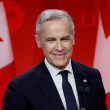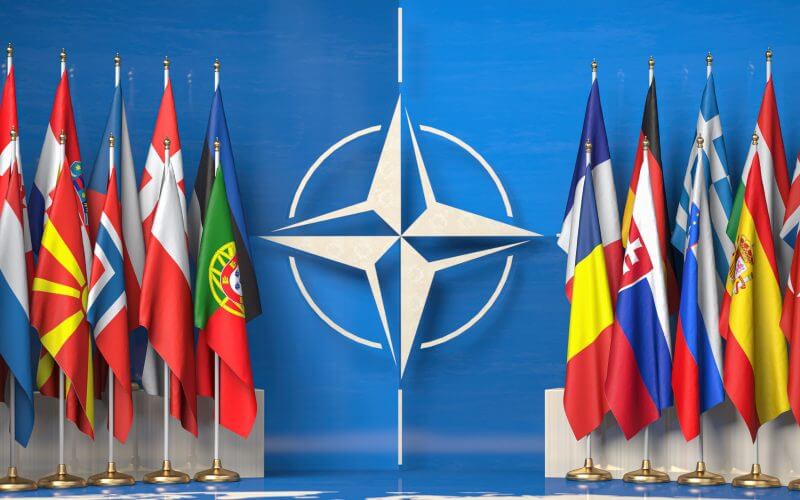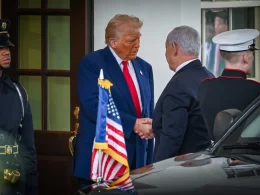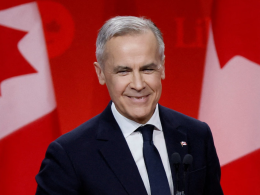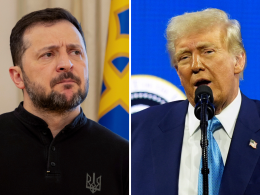Summary
The North Atlantic Treaty Organization (NATO), an international organization founded in 1949 and currently hosting 30 member countries from Europe and North America, has been in the news frequently over the past several weeks, primarily in connection to the ongoing crisis between Russia and Ukraine.
One of Russian President Vladimir Putin’s stipulations is that Ukraine should not be allowed to join NATO now or in the future.
But can Ukraine even join NATO? What is NATO’s purpose in the first place?
Below, The Foreign Desk explains 5 things you should know about NATO.
1. NATO's Purpose
NATO exists to protect the people and the territory of its members. NATO’s creation in 1949 was part of a broad effort to serve three purposes:
- Encouraging European political integration
- Deterring Soviet expansionism
- Forbidding the revival of nationalist militarism in Europe through a strong North American presence of the continent
Today, NATO is primarily a political and military alliance—its purpose is to guarantee the freedom and security of its members through political and military means.
On the political side, it “promotes democratic values” and enables its member-nations to “consult and cooperate on defense and security-related issues to solve problems, build trust, and prevent conflict.”
On the military side, NATO has the military power to undertake crisis-management operations if the preferred diplomatic efforts fail. Military operation can be carried out under the authority of Article 5 of the North Atlantic Treaty, under a United Nations mandate, or alone or in cooperation with other countries and international organizations.
2. “An Attack Against One is an Attack Against All.”
The NATO alliance is founded upon the principle of collective defense, meaning that if one NATO ally is attacked, then all NATO allies are attacked. This principle is enshrined in Article 5 of the North Atlantic Treaty, which created the NATO alliance. Since 1949, Article 5 has only been invoked once—in response to the 9/11 terrorist attacks in the United States in 2001.
However, as of 2014, NATO has implemented the biggest increase in its collective defense since the Cold War with the deployment of several battlegroups to Estonia, Latvia, Lithuania, and Poland to prevent conflict.
Amid the ongoing issues with Russia and Ukraine, more NATO troops have been sent to NATO allies such as Poland to deter invasion into NATO-allied countries.
3. The “Open Door” Policy.
A founding principle of NATO, the Open Door Policy means that any country in the Euro-Atlantic area is free to join the alliance “if it is prepared to meet the standards and obligations of membership, contributes to the security of the alliance, an shares NATO’s values of democracy, reform, and the rule of law.”
To join NATO, countries must be able to meet these criteria, and any country that can has membership open to them. The most current member of the alliance is North Macedonia, which joined in 2020. NATO also has a Membership Assistance Plan (MAP), which provides advice, assistance, and practical support for aspiring member countries.
Currently, Ukraine is not a member or NATO, nor a participant in the MAP program.
Ukraine, is not actively seeking membership. However, under the “Open Door” Policy, Ukraine, once/if it can meet NATO’s membership criteria and begins to actively seek NATO membership, is welcome to join.
4. NATO Troops, Equipment, Command Structure, and Funding.
NATO has very few permanent forces of its own. Whenever NATO members agree, by consensus, to engage in an operation, individual allies commit troops and equipment on a volunteer basis to be placed under a unified NATO command. These become known as “NATO forces.”
NATO has an integrated military command structure, which includes two top-level strategic commands.
This allows the alliance to implement political decisions that have military implications. Every country in the alliance contributes to the costs of running NATO; costs are borne collectively. NATO has two sources of funding: direct and indirect. Indirect contributions are the largest type of contributions and includes volunteering equipment, troops, or land to NATO or a NATO operation and paying the cost out of the country’s own national budget. Direct contributions are made to finance requirements of the alliance that serve the interests of all members. Within the principle of common funding, all 30 members contribute according to an agreed cost-share formula, based on Gross National Income, which represents a small percentage of each member’s defense budget.
5. How NATO Decisions Are Made.
Each member nation of NATO is represented on the North Atlantic Council by an Ambassador or Permanent Representative, who is supported by a national delegation composed of advisors and officials who represent their country on different NATO committees.
Member countries consult and make decisions on security issues on all levels in a variety of fields. NATO makes “NATO decisions,” which are expressions of the collective will of all 30 member countries. All decisions are made by consensus.
Consensus decision-making has been a fundamental principle of decision-making at NATO since its creation. Consensus decision-making means that there is no voting at NATO. Consultations take place until a decision that is acceptable to all is reached. This principle applies throughout NATO, at every level of decision-making.





